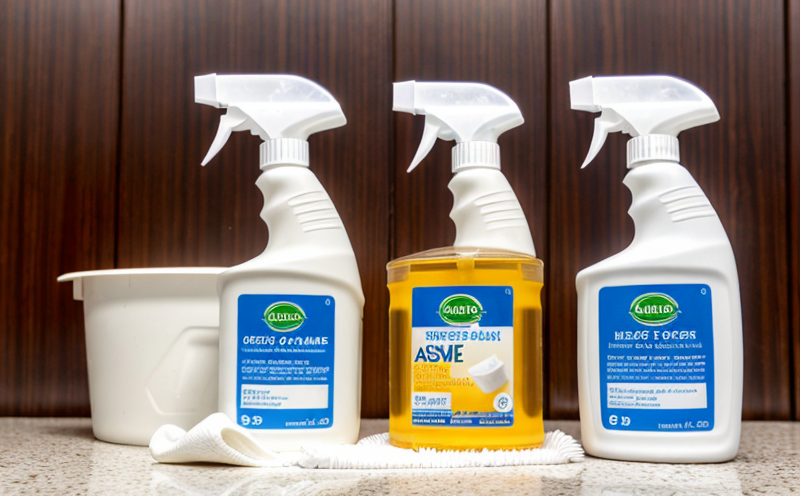ISO 18593 Surface Hygiene Sampling Testing
The ISO 18593 standard is a critical tool for ensuring the hygiene of surfaces in various environments, including healthcare facilities, food processing plants, and public spaces. This service involves the precise sampling and analysis of surfaces to detect contaminants such as microorganisms or chemical residues that could pose health risks.
Surface hygiene testing under ISO 18593 is essential for maintaining regulatory compliance and ensuring consumer safety. By identifying potential sources of contamination early on, facilities can implement effective cleaning protocols and prevent the spread of pathogens. This service not only helps in meeting stringent international standards but also enhances brand reputation by demonstrating a commitment to quality and hygiene.
The process begins with selecting appropriate sampling locations based on risk assessment. Common areas include door handles, keyboards, countertops, and other frequently touched surfaces. Once identified, samples are collected using sterile swabs or air sampling devices according to the ISO 18593 protocol. Specimens must be handled with care to avoid cross-contamination and ensure accurate results.
Upon collection, the samples undergo rigorous analysis in our accredited laboratory. Techniques such as quantitative PCR (polymerase chain reaction) are used for microbial identification, while advanced chromatography methods may be employed for detecting chemical residues. Results are provided within a specified timeframe, typically ranging from 5 to 10 business days depending on complexity.
It is important to note that ISO 18593 sampling does not replace routine cleaning practices; rather, it complements them by providing actionable insights into the effectiveness of current protocols. Regular monitoring helps facilities stay ahead of potential outbreaks and maintain a safe environment for occupants.
In conclusion, adhering to ISO 18593 standards ensures compliance with international regulations while fostering trust among customers and stakeholders. It is an indispensable service for any organization seeking to uphold high hygiene standards in their operations.
Industry Applications
| Industry | Application Details |
|---|---|
| Healthcare | Sampling and analysis of surfaces in patient care areas to ensure compliance with regulatory requirements. |
| Food Processing | Testing of equipment and packaging materials used in food production lines for residual contamination detection. |
| Retail | Evaluation of shopping carts, checkout counters, and other high-touch surfaces to maintain hygiene standards. |
- Education: Sampling classroom desks, computer keyboards, and other frequently touched items in schools.
- Transportation: Analysis of public transport vehicles such as buses, trains, and airplanes for surface contaminants.
| Risk Level | Sampling Frequency |
|---|---|
| High-Risk Areas (e.g., hospitals) | Daily sampling during peak usage hours. |
| Moderate-Risk Areas (e.g., schools) | Weekly or bi-weekly sampling. |
| Low-Risk Areas (e.g., offices) | Monthly sampling. |
Customer Impact and Satisfaction
Implementing ISO 18593 surface hygiene sampling testing provides numerous benefits to customers, enhancing their overall experience. Organizations that adopt this service demonstrate a proactive approach towards maintaining high standards of cleanliness and health safety.
- Enhanced Reputation: By adhering to international standards, companies can build credibility and trust with consumers who value safety above all else.
- Potential Savings: Early detection through regular sampling allows businesses to address issues before they escalate into larger problems, thereby reducing costs associated with remediation efforts.
- Customer Confidence: Knowing that thorough testing is conducted regularly reassures customers about the quality and safety of products or services provided by a company.
A satisfied customer base translates directly to increased loyalty and repeat business. Furthermore, successful implementation of ISO 18593 can contribute positively towards achieving certification from recognized bodies like NSF International (NSF).
Competitive Advantage and Market Impact
In today’s competitive market, maintaining top-notch hygiene standards is more than just a best practice; it's essential for survival. Adhering to ISO 18593 ensures that businesses remain ahead of competitors by consistently delivering superior products or services.
- Regulatory Compliance: Keeping up with changing regulations regarding surface hygiene can be challenging, but compliance demonstrates a commitment to excellence and reduces risk exposure.
- Innovation Opportunities: Regular sampling data provides valuable insights that can drive innovation within the organization. For instance, identifying persistent contaminants could lead to new cleaning solutions or improved sanitation practices.
A company known for its stringent hygiene measures enjoys greater brand recognition and appeal among health-conscious consumers. This competitive edge translates into higher market share and profitability over time.





